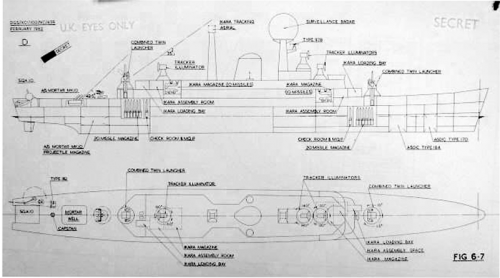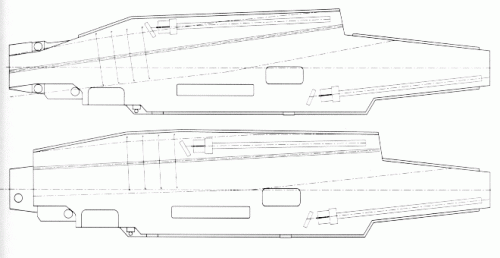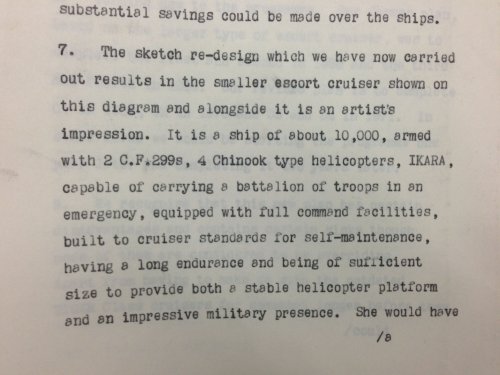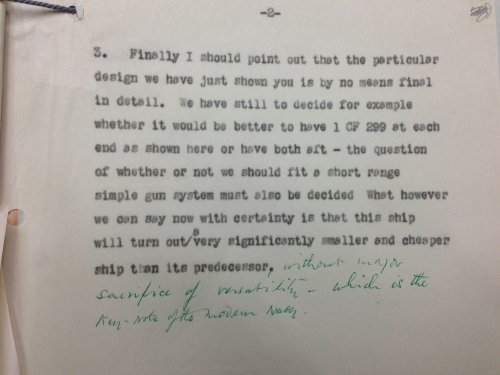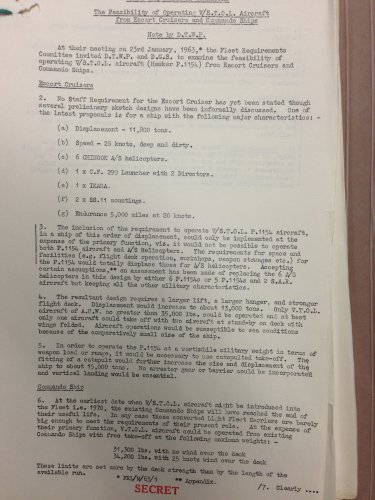- Joined
- 27 September 2006
- Messages
- 6,418
- Reaction score
- 6,827
The two recent books on post-war British ships (Brown and Moore-Rebuilding the Royal Navy and Norman Friedman’s British Destroyers and Frigates) give numerous descriptions of ships for which there seem to be no drawings or illustrations.
The most interesting (because there are so many drawings of previous and later variants) is the Escort Cruiser, which was postponed in 1962 because of the purchase of Polaris.
The planned design (SCC 36A) was for a 10,000 ton ship armed with two Seadart launchers (SAWG) and one Ikara (ASWG) launcher, and carrying 4 Chinook ASW helicopters. It derived from the ship with Seaslug and 4.5” gun widely illustrated with a through deck design. It was the starting point for the 1966 designs which led to the Invincible class CAH.
The ships planned (with completion dates and replaced ships)were:
EC 01 1969 (9th County)
EC 02 1970 (10th County)
EC 03 1971 (Tiger)
EC 04 1971 (Blake)
EC 05 later (Lion)
Such specialised ships would certainly have been better value and more capable than the Tiger conversions, and probably not much more expensive. So it’s a shame that no plans or illustrations of the final design seem to exist.
The most interesting (because there are so many drawings of previous and later variants) is the Escort Cruiser, which was postponed in 1962 because of the purchase of Polaris.
The planned design (SCC 36A) was for a 10,000 ton ship armed with two Seadart launchers (SAWG) and one Ikara (ASWG) launcher, and carrying 4 Chinook ASW helicopters. It derived from the ship with Seaslug and 4.5” gun widely illustrated with a through deck design. It was the starting point for the 1966 designs which led to the Invincible class CAH.
The ships planned (with completion dates and replaced ships)were:
EC 01 1969 (9th County)
EC 02 1970 (10th County)
EC 03 1971 (Tiger)
EC 04 1971 (Blake)
EC 05 later (Lion)
Such specialised ships would certainly have been better value and more capable than the Tiger conversions, and probably not much more expensive. So it’s a shame that no plans or illustrations of the final design seem to exist.

